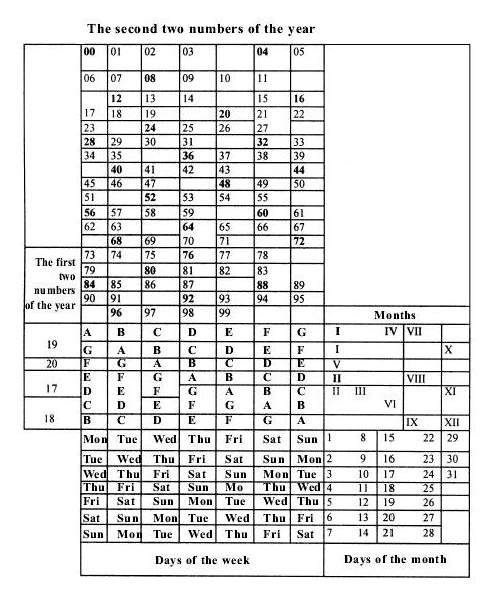How to use the eternal calendar
If we want to determine which day of the week is, for example, 21 March
1953, we do the following:
1. In the column “The first two numbers of the
year” we find the row showing the first two numbers of the year
(in this case 19). In the table “The second two numbers of the year”
we find the column containing the second two numbers of the year (in this
case 53). In the table of capital letters (middle section) we find the
letter corresponding to the intersection of the respective row and column
(in this case C).
2. In the column “Months” we find the row
containing the number of the sought month (in this case III), and on the
same row in the table of capital letters we find the column of the letter
we have already found (in this case C).
3. In the bottom right-hand section of the table “Days
of the month” we find the row containing the day we want (in this
case 21). The intersection of this row with the column obtained in 2.
above gives us in the column “Days of the week” the sought
day of the week (in this case Sat - Saturday).
4. Leap years are marked in bold in the column of the
second two numbers of the year. In the column of months we must differentiate
between January and February in leap years, which are marked in bold.
While in the old style all years ending in “00” are leap years,
in the new style only the years whose first two numbers divide by 4 without
residual are leap years. In Bulgaria the last day of the old style calendar
is 31 March 1916. Instead of 1 April 916 we must calculate 14 April 1916
by the new style of the Gregorian calendar.
<< previous
 next >>
next >>
|

